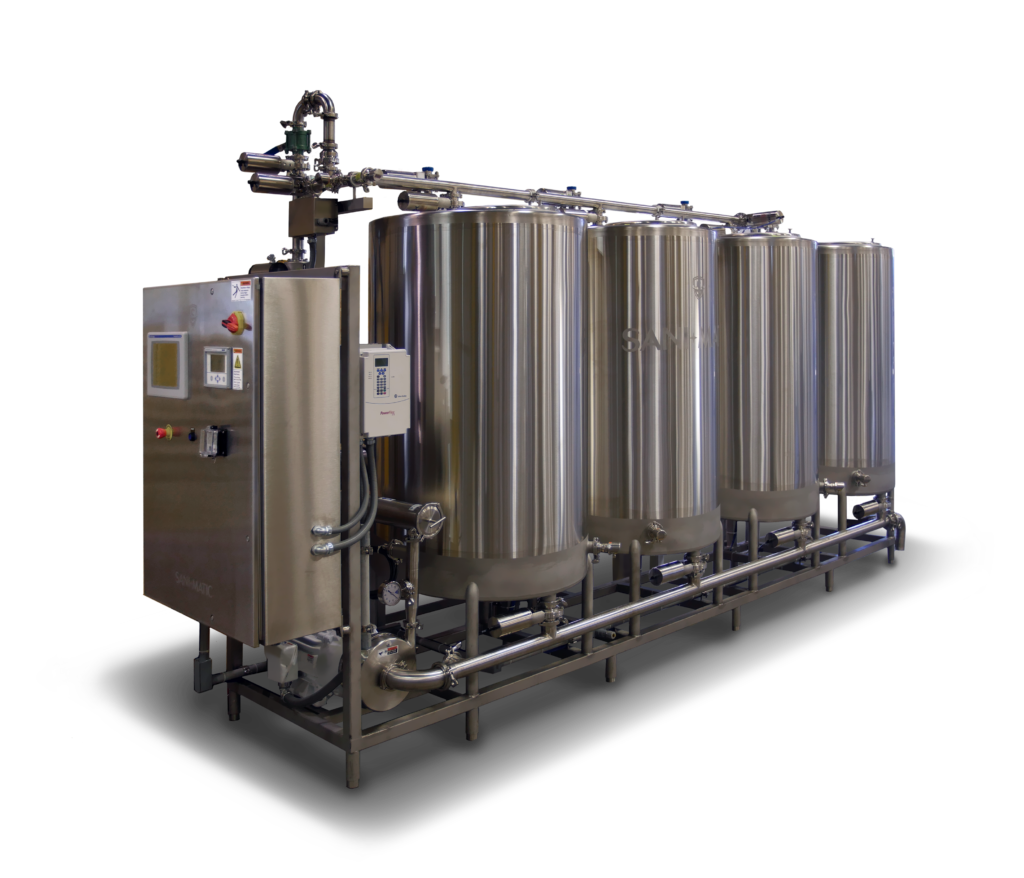Menu

Is it time to upgrade your CIP system? Single-tank, two-tank, multi-tank and multi-circuit construction are all options when designing and building a Clean-In-Place (CIP) sanitary cleaning system. Certain processors require multiple tank systems for the following reasons:
Another potential way to enhance production capacity is with a multi-circuit system. This option gives producers the ability to clean multiple processes and products at the same time.

CIP systems are not “one size fits all” solutions. Along with our sanitary cleaning partners, Sani-Matic, Rodem can evaluate your current cleaning process, advise on the areas of greatest impact for your facility and help meet your cleaning objectives to ensure safe and efficient delivery of your finished product.
The chart below shows a quick comparison of single use systems versus reuse systems and can help determine the best fit for your sanitary process.
| SINGLE USE CIP | RECOVERY CIP |
|---|---|
| Low capital cost | High capital cost |
| Small space requirement | Larger space requirement |
| Low contamination risk | Higher contamination risk: mitigate with proper controls |
| High ownership costs: water, energy, effluent volume | Lower ownership costs: water, energy, effluent volume |
| Longer time/delay | Shorter time/delay |
| Availability of proper rinse flow rates | Insures proper flow rates |
When using a single-tank system, you have downtime while waiting for the single tank to fill and drain for each step in the cleaning cycle. With the addition of a second tank dedicated to chemicals it allows for reuse of that chemical. Further addition of a third tank allows for a rinse recovery step to recover rinse water from a previous cycle to be reused in the following cycle’s pre-rinse step.
There are many considerations to account for when designing a CIP system and process, line flow velocity, soil levels, process conditions, size and location of tanks and equipment size to name a few. Set up a consultation with a sanitary cleaning expert to see what works best with your requirements and desired outcome.

E-mail: [email protected]
Copyright 2024 Rodem Inc. All rights reserved.